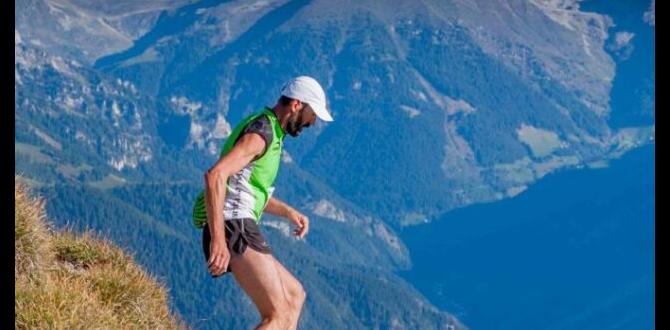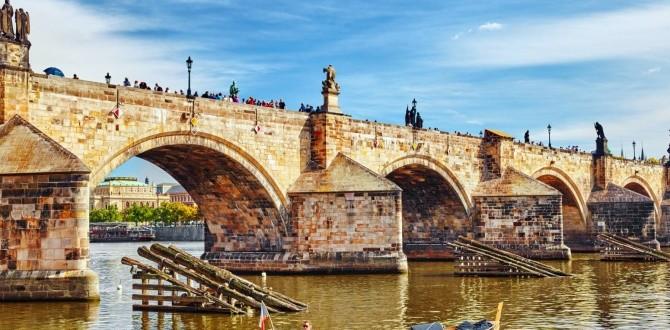Planning a trip to Agra on a mid-range budget is entirely achievable for an effortless adventure! This guide breaks down how to enjoy the iconic Taj Mahal and other wonders without overspending, focusing on smart choices for accommodation, food, transport, and sightseeing. Get ready for a comfortable and memorable experience!
Agra, the city of the Taj Mahal, often conjures images of grandeur and historical marvels. Many travelers worry that experiencing its magic requires a hefty budget. This guide is here to show you it doesn’t! We’ll walk you through making smart, budget-friendly choices so you can focus on the breathtaking history and vibrant culture. Forget the stress; get ready for an easy, unforgettable journey.
Your Agra Mid-Range Travel Guide: Making the Most of Every Rupee
Traveling to Agra doesn’t mean sacrificing comfort or experiences. With a little planning, you can enjoy the city’s treasures on a mid-range budget. This means finding cozy stays, savoring delicious local food, navigating easily, and seeing the sights without breaking the bank. Let’s explore how!
Smart Accommodation Choices for Comfort and Value
Finding a great place to stay is key to a comfortable trip. For a mid-range budget in Agra, you have several excellent options that offer good value. These places often provide amenities that make your stay more enjoyable without the luxury price tag.
Guesthouses and Boutique Hotels
- What they offer: Often family-run, these establishments provide a more personal touch. Expect clean rooms, often with AC and attached bathrooms, and friendly service. Some might even offer homemade breakfast.
- Why choose them: They are generally more affordable than larger hotels and can offer insights into local life. They are usually located in quieter neighborhoods, providing a peaceful retreat after a day of sightseeing.
- Finding them: Look for well-reviewed guesthouses on booking sites. Websites like Booking.com and Agoda list many options with traveler reviews and photos, helping you pick the best fit.
Budget-Friendly Chain Hotels
- What they offer: These hotels provide consistent quality and a predictable level of comfort. Rooms are usually well-maintained, with standard amenities like Wi-Fi, attached bathrooms, and sometimes a restaurant.
- Why choose them: They offer reliability and a good balance between cost and comfort. They are a safe bet if you prefer a familiar standard.
- Finding them: Several Indian and international budget hotel chains operate in Agra. Searching for “budget hotels Agra” on travel portals will bring up reputable options.
Homestays for an Authentic Experience
- What they offer: Staying with a local family offers a unique cultural immersion. You’ll get a glimpse into daily life and enjoy home-cooked meals. Rooms are often basic but comfortable.
- Why choose them: This is the most authentic way to experience Agra. You get genuine hospitality and a chance to interact with locals.
- Finding them: Platforms like Airbnb have listings for homestays. Always read reviews carefully to understand the experience offered.
Tips for Booking Accommodation:
- Book in advance, especially during peak tourist season (October to March).
- Read recent reviews for insights into cleanliness, service, and location.
- Check the exact location to ensure it’s convenient for the sights you want to visit.
- Confirm what amenities are included (Wi-Fi, breakfast, hot water).
Delicious and Affordable Eats: A Culinary Journey
Agra’s food scene is a delight, offering flavors that will tantalize your taste buds without emptying your wallet. From street-side snacks to local eateries, you can eat incredibly well on a mid-range budget.
Local Eateries and ‘Dhabas’
- What they offer: These are small, often bustling restaurants serving authentic North Indian cuisine. Expect flavorful curries, tandoori dishes, and freshly baked bread.
- Why choose them: This is where locals eat, so the food is genuine, delicious, and very affordable. It’s a great way to try regional specialties.
- Must-try dishes: Aloo Tikki (spiced potato patties), Petha (a local sweet), and various dal (lentil) preparations.
Street Food Adventures
- What they offer: Agra offers a variety of street food. From spicy chaats to sweet Jalebis (fried dough soaked in syrup), there’s something for everyone.
- Why choose them: It’s an incredibly economical way to snack and taste local flavors.
- Tips for safe eating: Choose vendors with high turnover, look for freshly prepared food, and ensure good hygiene practices. If you have a sensitive stomach, ease into street food or opt for cooked items.
Mid-Range Restaurants
- What they offer: These offer a more comfortable dining experience than dhabas but are still affordable. They serve both Indian and often some international cuisine in a pleasant setting.
- Why choose them: They provide a good compromise between authenticity and comfort, with a wider menu and better ambiance.
- Finding them: Many are located near popular tourist areas and hotels. Look for places busy with locals for a good sign of quality.
Sample Mid-Range Meal Costs (per person, approximate):
These are rough estimates and can vary based on the specific establishment.
| Meal Type | Estimated Cost (INR) |
|---|---|
| Street Food Snack | 20 – 100 |
| Lunch at a Local Eatery | 150 – 300 |
| Dinner at a Mid-Range Restaurant | 250 – 600 |
| Beverages (tea, lassi, water) | 20 – 70 |
Effortless Transportation: Getting Around Agra
Navigating Agra is straightforward and can be done affordably. You have several options to get from place to place, ensuring you can reach all the attractions easily.
Auto-Rickshaws
- What they are: Three-wheeled motorized vehicles, they are a common and convenient way to travel short to medium distances within the city.
- How to use them: You can hail them on the street. Always agree on the fare before you start your journey. For longer distances or if you plan to use one for a few hours, negotiating a daily rate is possible.
- Tips: Keep small denominations of rupees handy for fares. Some drivers may not speak much English, so having your destination written down in Hindi or on a map can be helpful.
Cycle Rickshaws
- What they are: Human-powered rickshaws, ideal for very short distances or exploring quieter lanes.
- How to use them: Negotiate fare upfront. They are slower and best for leisurely rides.
- Why use them: Environmentally friendly and offer a slower pace to see local life.
Taxis and Ride-Sharing Apps
- What they are: For more comfort, especially if you’re traveling with family or have luggage, taxis are a good option. Apps like Uber and Ola operate in Agra and can provide metered fares.
- How to use them: Book via their respective apps. This ensures a transparent pricing system and often more comfortable vehicles.
- Tips: Ensure the driver’s details match the app. Keep the app handy for easy booking.
Walking and Exploring
- What it is: Many parts of Agra, especially around tourist sites, are best explored on foot. This allows you to soak in the atmosphere and discover hidden gems.
- Why do it: It’s free, healthy, and offers the most intimate experience of the city.
- Tips: Wear comfortable shoes, stay hydrated, and be aware of your surroundings.
Sightseeing on a Budget: Agra’s Magnificent Attractions
Agra is home to some of India’s most iconic landmarks. You can visit these wonders without overspending by planning wisely.
The Taj Mahal
- When to visit: Early morning (sunrise) offers the best light and fewer crowds. Avoid Fridays, as it’s closed for prayers.
- Ticket Prices: Foreign tourists pay significantly more than Indian nationals. Book tickets online in advance to save time and potentially avoid queues. Refer to the official Archaeological Survey of India (ASI) website for current pricing and opening hours.
- Mid-range tip: Consider hiring a licensed guide at the entrance if you want in-depth knowledge. Negotiate the price beforehand or book through your hotel for potentially better rates.
Agra Fort
- What it is: A UNESCO World Heritage site, this massive red sandstone fort was once the main residence of the Mughal emperors.
- Why visit: It offers stunning views of the Taj Mahal from certain points and showcases impressive Mughal architecture.
- Tickets: Separate tickets are required. The cost is considerably less than the Taj Mahal.
- Mid-range tip: Allocate at least 2-3 hours to explore the fort properly.
Fatehpur Sikri
- What it is: A magnificent, abandoned city built by Emperor Akbar, located about 40 km from Agra.
- Why visit: It’s a stunning example of Mughal architecture and a well-preserved ghost city.
- Getting there: You can hire a taxi or join a shared taxi service from Agra. Road conditions have improved, with highways making it accessible. Check current travel advisories and road conditions on government transport websites like the Ministry of Road Transport and Highways.
- Tickets: Entrance fees apply.
- Mid-range tip: Consider hiring a guide at Fatehpur Sikri itself.
Other Attractions
- Mehtab Bagh: A Mughal garden complex across the Yamuna River, offering beautiful sunset views of the Taj Mahal. It’s a more affordable alternative for Taj views.
- Itmad-ud-Daulah’s Tomb (Baby Taj): A beautiful tomb that predates the Taj Mahal and has intricate inlay work.
Packing Essentials for Comfort and Convenience
Packing smart ensures you’re comfortable and prepared for your Agra adventure. Focus on essentials that make travel smoother.
Clothing
- Lightweight, breathable fabrics (cotton, linen) are best due to the climate.
- Modest clothing out of respect for local culture, especially when visiting religious sites (shoulders and knees covered).
- A light shawl or scarf is versatile – for warmth, sun protection, or covering up.
- Comfortable walking shoes are essential.
Health and Personal Care
- Hand sanitizer: Crucial for hygiene, especially when eating on the go or after using public transport.
- Sunscreen and a hat: The sun can be intense.
- Insect repellent: Useful for evenings and in areas with greenery.
- Any personal medications: Carry a sufficient supply. For those managing incontinence, discreet and reliable adult diapers or pull-ups offer peace of mind and comfort during long sightseeing days, ensuring you stay dry and confident. Similarly, ensuring children have comfortable and secure child diapers means fewer interruptions and a happier travel experience for everyone.
- Basic first-aid kit: Band-aids, antiseptic wipes, pain relievers.
Documents and Money
- Passport and Visa (if applicable).
- Copies of important documents (stored separately).
- Cash: Have some Indian Rupees on hand for smaller purchases and transport.
- Credit/Debit cards: Inform your bank about your travel dates.
Electronics
-
- Phone and charger.
- Power bank: Invaluable for keeping devices charged when you’re out and about.
- Universal travel adapter if needed.
Adult Diapers for Travel: For travelers who need them, modern adult diapers are discreet, absorbent, and designed for extended wear. Choosing the right absorbency level and fit can prevent leaks and discomfort, allowing for longer outings and travel days without worry. Brands offer options like pull-ups for easier wear, similar to underwear, which can be particularly convenient.
Sample Mid-Range Agra Itinerary (3 Days)
This itinerary balances iconic sights with relaxation, keeping a mid-range budget in mind.
Day 1: Arrival and the Majestic Taj Mahal
- Morning: Arrive in Agra, check into your mid-range accommodation.
- Afternoon: Visit the Taj Mahal. Spend 3-4 hours marveling at its beauty.
- Evening: Enjoy dinner at a local restaurant and perhaps a stroll near your hotel.
Day 2: Forts and Mughal Grandeur
- Morning: Explore the impressive Agra Fort.
- Lunch: Enjoy a budget-friendly lunch at a local eatery.
- Afternoon: Visit Itmad-ud-Daulah’s Tomb (Baby Taj) or Mehtab Bagh for sunset views of the Taj.
- Evening: Try some local street food for a snack and have a relaxed dinner.
Day 3: Beyond Agra or Departure
- Option 1 (Day Trip): Take a taxi to Fatehpur Sikri (half-day trip).
- Option 2 (Local Exploration): Visit the Kinari Bazaar for souvenirs and local crafts, or explore more of Agra’s less-visited sites.
- Afternoon: Depart from Agra.
Budget Breakdown: Estimating Mid-Range Costs
Here’s a rough estimate for a solo traveler for 3 days, excluding flights to/from Agra.
| Category | Estimated Cost per Day (INR) | Total for 3 Days (INR) |
|---|---|---|
| Accommodation (mid-range hotel/guesthouse) | 1500 – 3000 | 4500 – 9000 |
| Food (mix of local eateries & street food) | 700 – 1200 | 2100 – 3600 |
| Local Transport (auto-rickshaws, occasional taxi) | 300 – 600 | 900 – 1800 |
| Sightseeing Entrance Fees (Taj Mahal, Agra Fort, etc.) | Varies (major cost on day 1) | 3000 – 5000 (approx for foreign nationals) |
| Miscellaneous (souvenirs, tips, etc.) | 300 – 500 | 900 – 1500 |
| Total Estimated Range: | ~3100 – 5800 per day | ~9400 – 17900 for 3 days |
This budget is a guideline. You can save more by opting for simpler guesthouses, eating more street food, and walking more.
Frequently Asked Questions
Q1: What is the best time of year to visit Agra on a budget?
A1: The best time is generally from October to March. The weather is pleasant, which is ideal for sightseeing. While it’s peak season, booking accommodation and tours in advance can help secure mid-range prices. Shoulder seasons (like early October or late March) might offer slightly better deals.
Q2: How can I save money on the Taj Mahal ticket?
A2: The most significant cost saving is if you are an Indian national. For foreign tourists, the price is fixed. Booking tickets online through the official ASI website can save you queue time. Research if any combination tickets offer slight discounts for multiple monuments, although this is rare within Agra itself.





